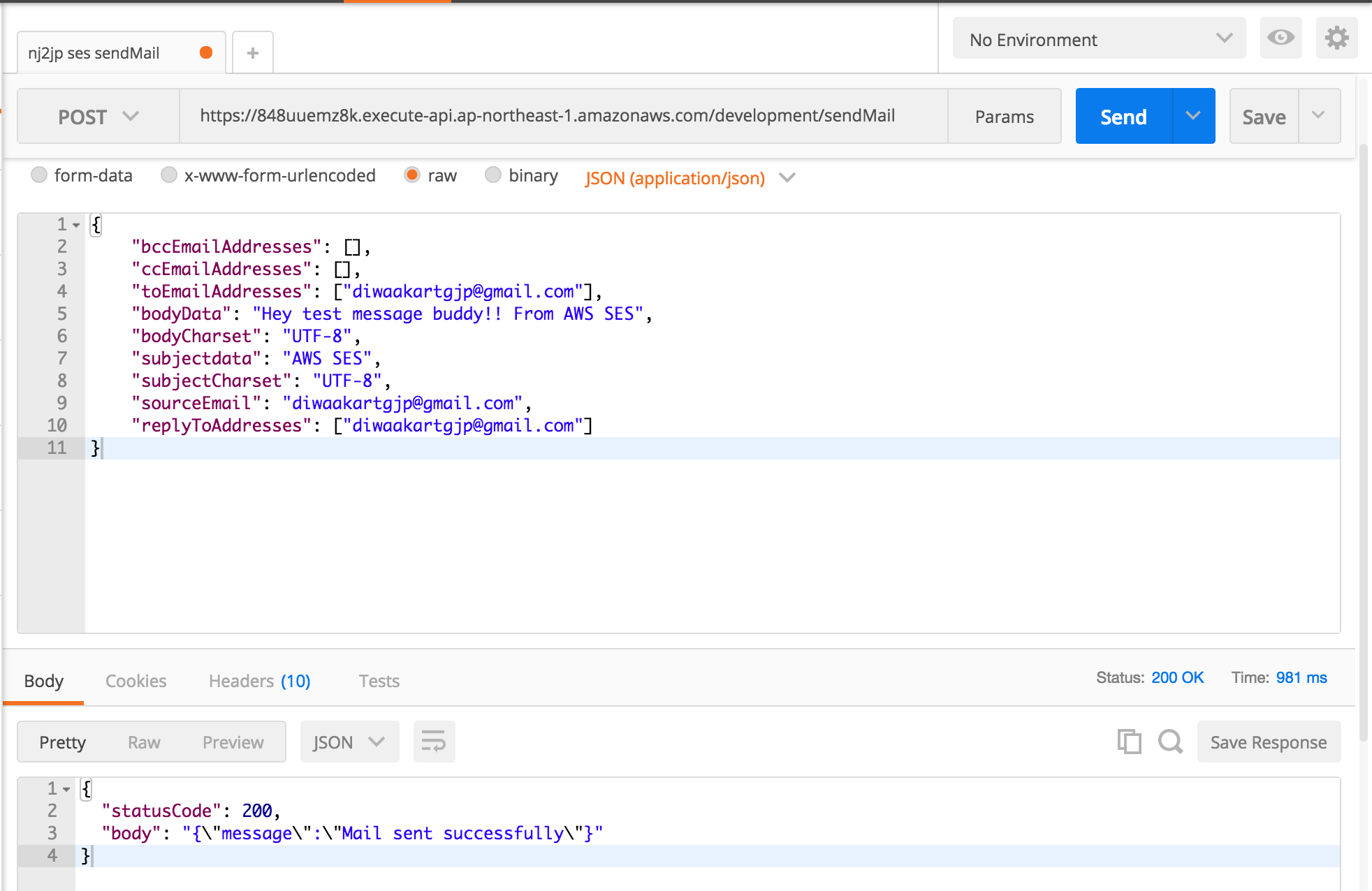This repo is an example of sending email using SES on Lambda invocation. It uses the AWS SES nodeJS SDK to send emails. Various parameters for sending email such as sourceEmail address, destination email address can be specified as body parameter for the Deployed APIGateway URL.
- If you are in SES sandbox, you have to verify both sender and receiver email addresses. But, If you have migrated out of SES sandbox, sender mail alone must be verified.
- Best practice is to use IAM roles compared to hardcoding AWS credentials in application. For the IAM roles related to SES, take a look at the sesIAMRole branch.
- Clone this repo:
git clone https://github.com/lakshmantgld/aws-ses-serverless-example.git
- Install the dependencies:
cd aws-ses-serverless-example && yarn install or npm install
- Set the AWS credentials as environment variables like described below:
AWS_SECRET_ACCESS_KEY=<secret-key>
AWS_REGION=<region>
AWS_ACCESS_KEY_ID=<access-key>
The above credentials are required for deploying the Lambda and APIGateway using serverless
-
Rename the
config.copy.jsontoconfig.json. -
Fill the above AWS credentials to config.json. As SES uses this credentials to send mail. Presently, SES supports only in US East, US West & EU(Ireland). So, If your region is not supported by SES, make sure you select the above regions and add it to the config.json.
-
Finally, deploy the app by running
sls deploy -v. -
Once the deployment completes, you can send mail by invoking the URL with the following parameters.
{
"bccEmailAddresses": [],
"ccEmailAddresses": [],
"toEmailAddresses": ["****@gmail.com"],
"bodyData": "Hey test message buddy!! From AWS SES",
"bodyCharset": "UTF-8",
"subjectdata": "AWS SES",
"subjectCharset": "UTF-8",
"sourceEmail": "****@gmail.com",
"replyToAddresses": ["****@gmail.com"]
}

